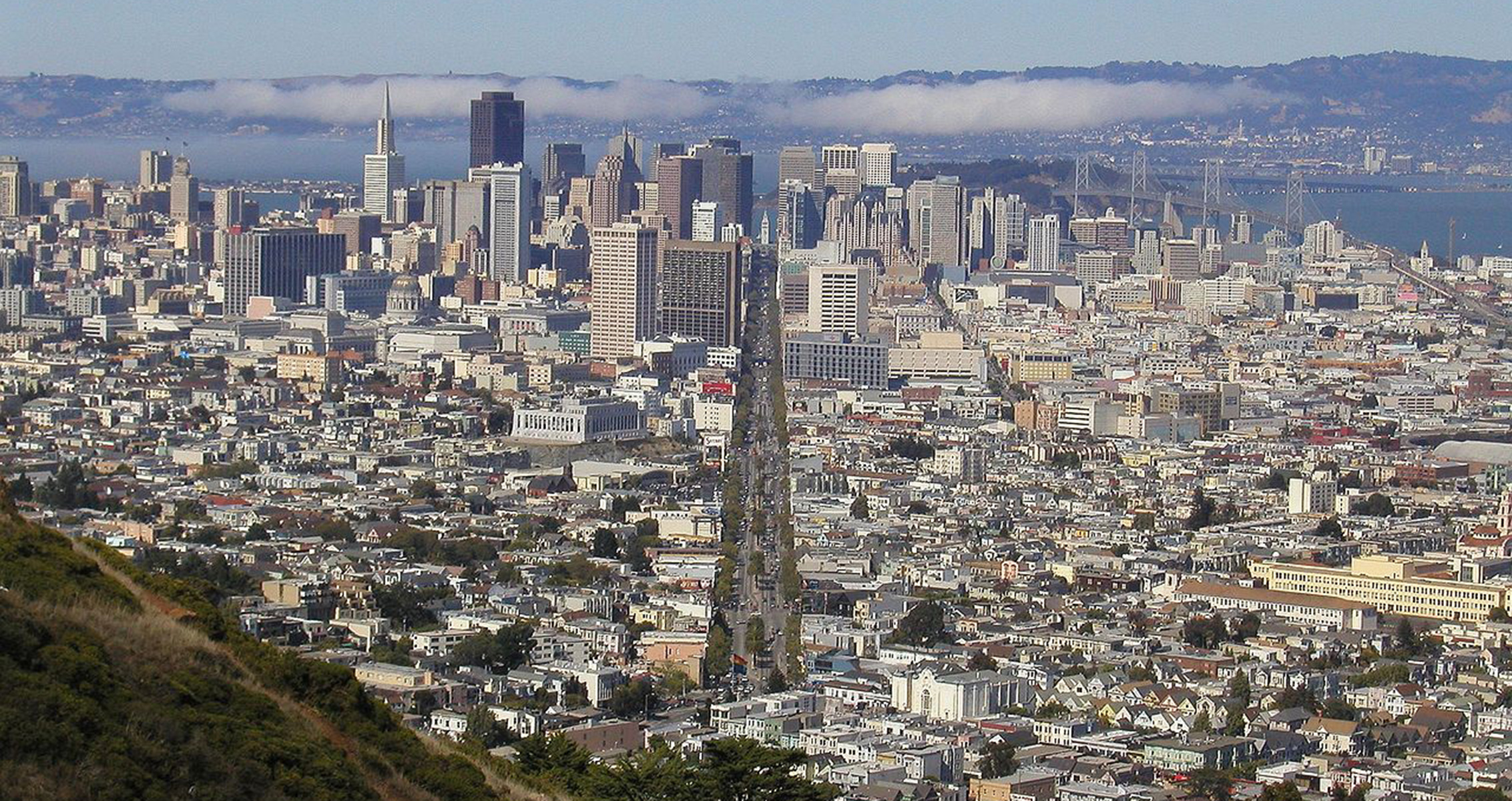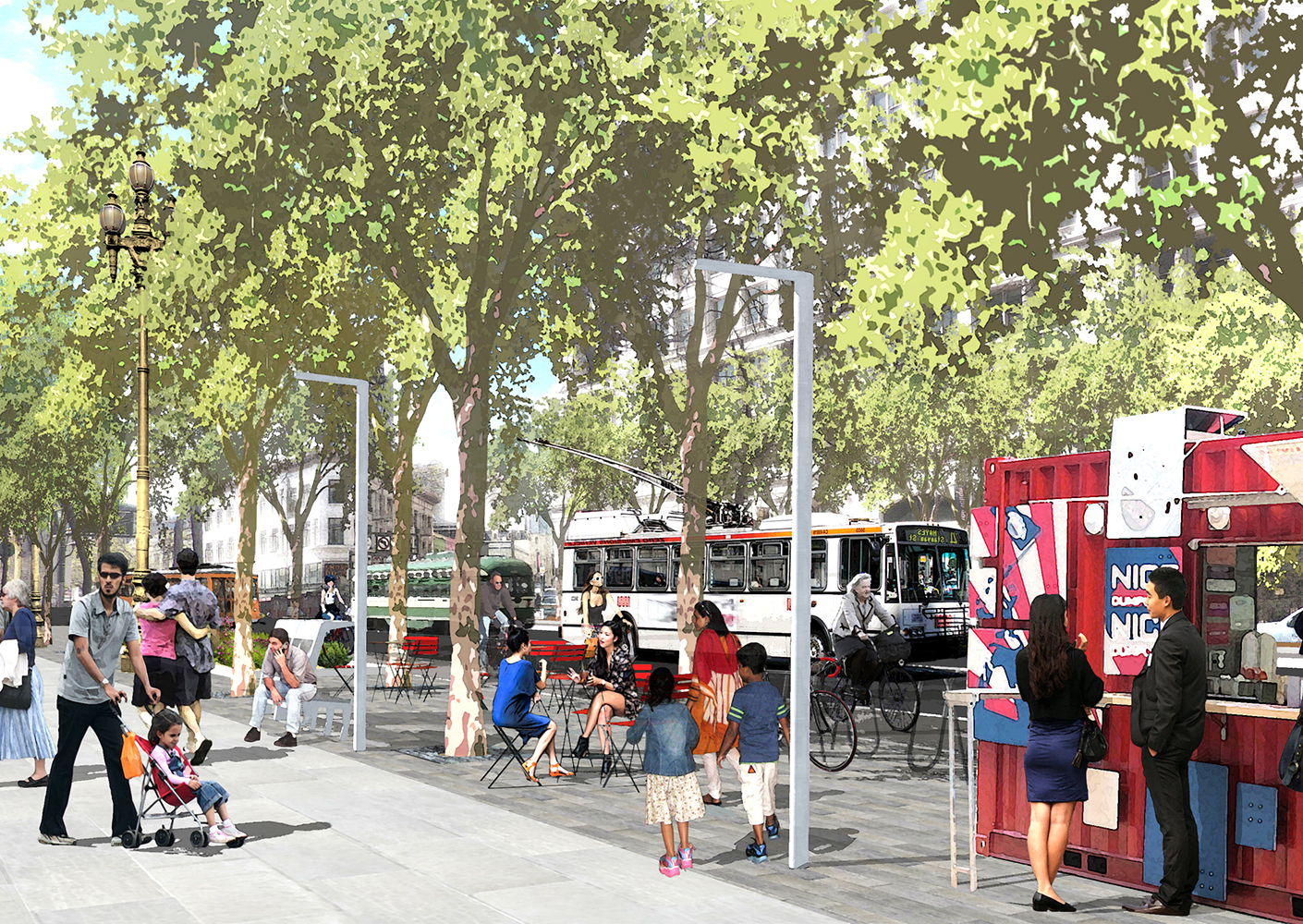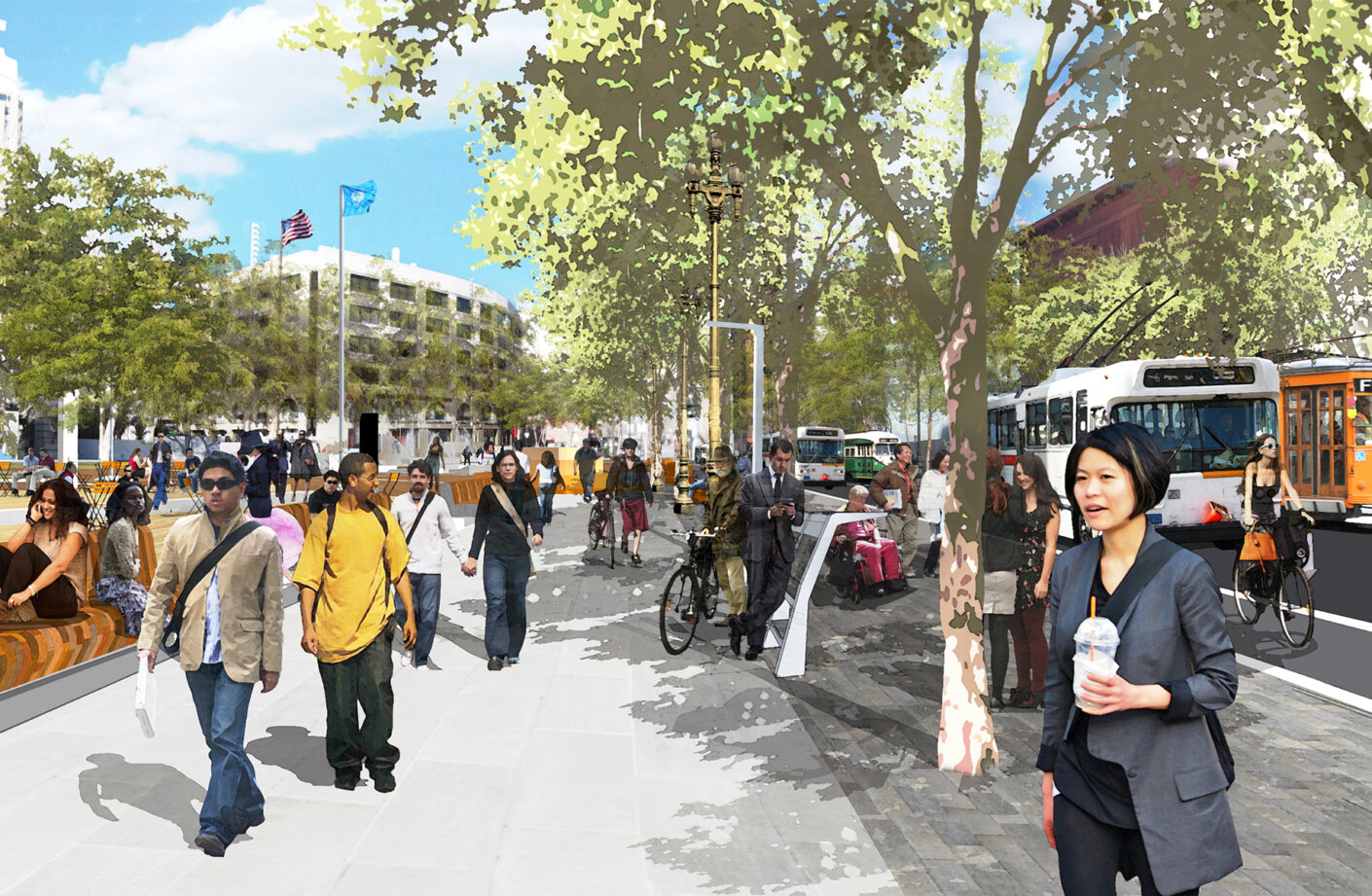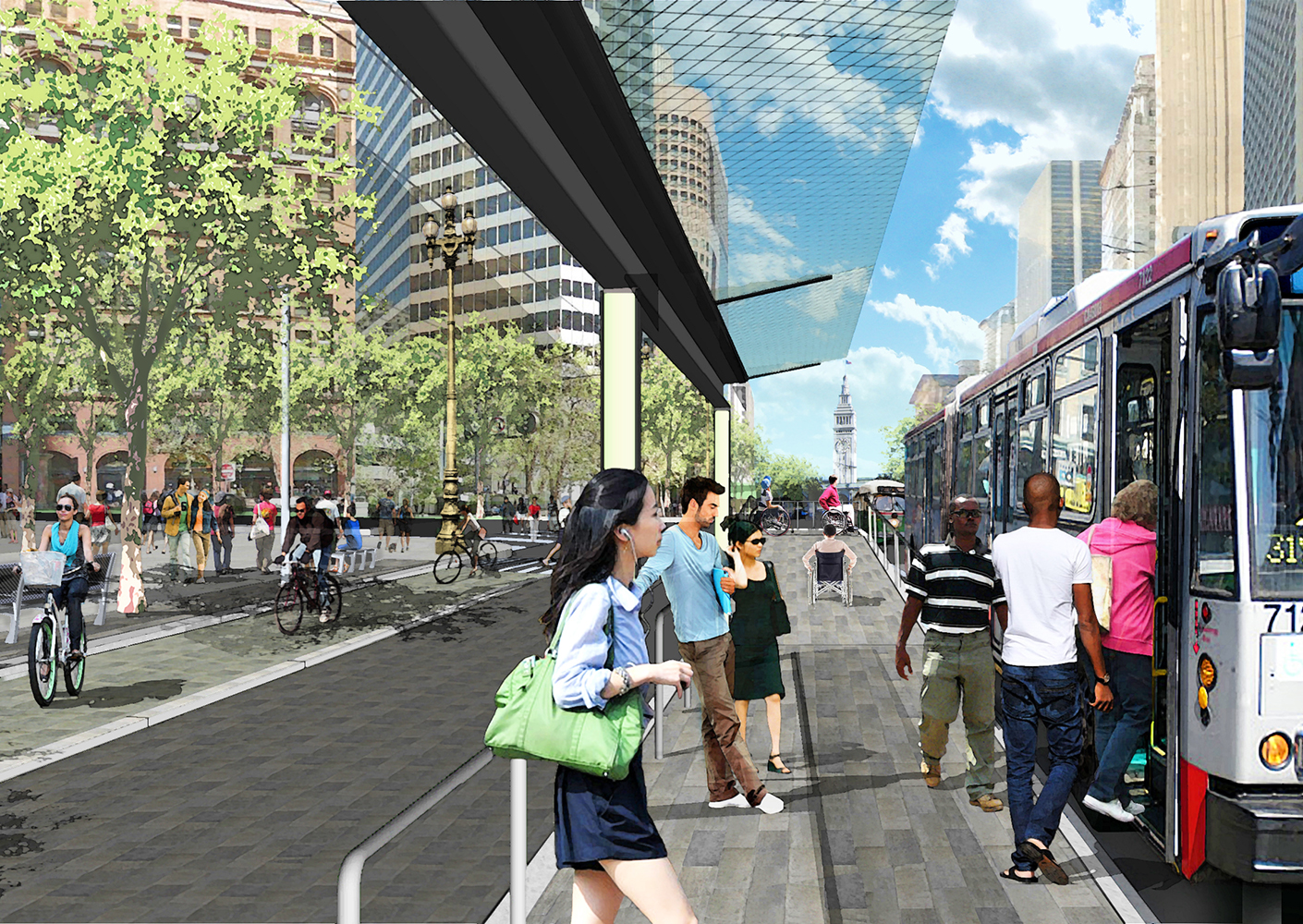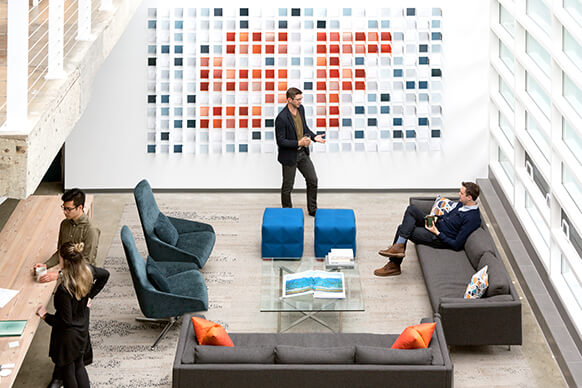The downtown section of San Francisco’s famous Market Street, which connects the city’s hills to its bay, now prioritizes pedestrians, cyclists, and public transportation by closing off access to private vehicles. Market Street’s new image will be instrumental in inspiring other cities and streets globally to do the right thing—emphasizing low-carbon modes of mobility.
Almost a decade ago, Perkins&Will’s San Francisco studio led the team tasked with envisioning a Better Market Street. Comprised of urban designers, transportation planners, infrastructure engineers, public realm strategists, streetscape designers and way finding experts; we spent three years studying the corridor.
